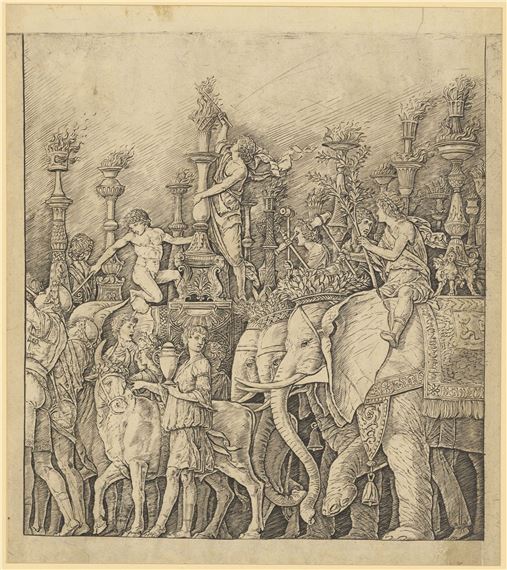Heroes, Saints, and Elephants
The exhibition Heroes, Saints, and Elephants presents the art of Italian Renaissance copperplate engraving at the Kunstmuseum Basel for the very first time. Around 40 prints from the collection of the Kupferstichkabinett are on display, featuring a wide variety of motifs. Some of these works were conceived as original images while others are based on compositions by Italian masters such as Andrea Mantegna, Michelangelo, Raphael, and Leonardo da Vinci. Works by Albrecht DĂĽrer, Lucas van Leyden, and Martin Schongauer, whose prints greatly influenced Italian artists, round out the exhibition.
Copperplate engraving developed in Italy starting around 1460. Initially, the technique was an arena of experimentation in which the cultural impulses of the Renaissance found expression – for instance, through the reinterpretation of motifs from antiquity. After 1500, increasingly more artists began to use copperplate engraving to reproduce and disseminate existing images, whether their own or those created by others. Early copperplate engraving became a productive driver of Italian art, establishing itself both as an important art form and a lucrative business. Many aspects of this history, however – such as the identity of some artists – remain unclear to this day.

Recommended for you
The exhibition Heroes, Saints, and Elephants presents the art of Italian Renaissance copperplate engraving at the Kunstmuseum Basel for the very first time. Around 40 prints from the collection of the Kupferstichkabinett are on display, featuring a wide variety of motifs. Some of these works were conceived as original images while others are based on compositions by Italian masters such as Andrea Mantegna, Michelangelo, Raphael, and Leonardo da Vinci. Works by Albrecht DĂĽrer, Lucas van Leyden, and Martin Schongauer, whose prints greatly influenced Italian artists, round out the exhibition.
Copperplate engraving developed in Italy starting around 1460. Initially, the technique was an arena of experimentation in which the cultural impulses of the Renaissance found expression – for instance, through the reinterpretation of motifs from antiquity. After 1500, increasingly more artists began to use copperplate engraving to reproduce and disseminate existing images, whether their own or those created by others. Early copperplate engraving became a productive driver of Italian art, establishing itself both as an important art form and a lucrative business. Many aspects of this history, however – such as the identity of some artists – remain unclear to this day.
Contact details


 ARTISTS
ARTISTS











